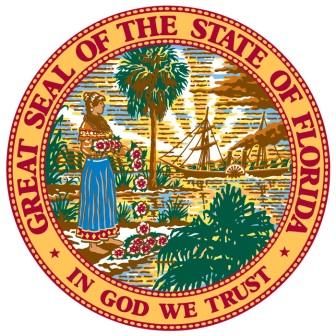
|
2024 Meeting Schedule
Downloadable PDF

STRUCTURE OF THE FLORIDA CABINET
In 1998 the Constitutional Revision Commission proposed a rewrite of Article IV, Section IV of the Florida Constitution that reduced the Florida Cabinet from six elected officials to three. Effective January 7, 2003, the Florida Cabinet consists of the Attorney General, the Chief Financial Officer and the Commissioner of Agriculture. The Cabinet offices of Secretary of State and Commissioner of Education became appointed offices and their respective agencies became the responsibility of the Governor. The revised constitution also created a new State Board of Education with seven members appointed by the Governor to oversee the Department of Education. The Cabinet offices of Treasurer and Comptroller were merged into the new position of Chief Financial Officer who serves as agency head for the newly created Department of Financial Services.
The Cabinet system consists primarily of the following boards and commissions:
Administration Commission
Board of Trustees Internal Improvement Trust Fund
Department of Highway Safety and Motor Vehicles
Department of Law Enforcement
Department of Revenue
Department of Veterans' Affairs
Division of Bond Finance
Electrical Power Plant and Transmission Line Siting Board
Florida Land and Water Adjudicatory Commission
Financial Services Commission
State Board of Administration
State Board of Executive Clemency
HISTORY OF THE FLORIDA CABINET
Florida is historically unique among the
50 states in America. Until January 7,
2003, it was the only state to have a
Governor plus a Cabinet consisting of six
independently and constitutionally elected
state executives. Florida now has a
Cabinet consisting of three
constitutionally elected state executives.
The Governor is the popularly elected
"chief executive" of Florida but the three
members of the Cabinet are also elected by
the people and serve as a collective
decision and rule making body for the
state. Each Cabinet member serves a
four-year term with a two-term limit and
is wholly responsible for the
administration of at least one state
department. The Governor is responsible
for the administration of most other state
departments.
Reflecting the concern that a single
person might exercise too much power,
Floridians ratified the Florida
Constitution of 1968, affirming the
independence of Cabinet members by
deleting the phrase, "the Governor shall
be assisted by" the Cabinet. This gave
each member equal footing with the
Governor on matters that come before the
Governor and Cabinet so that Cabinet
members were no longer
expected,constitutionally, to capitulate
to the Governor's wishes.